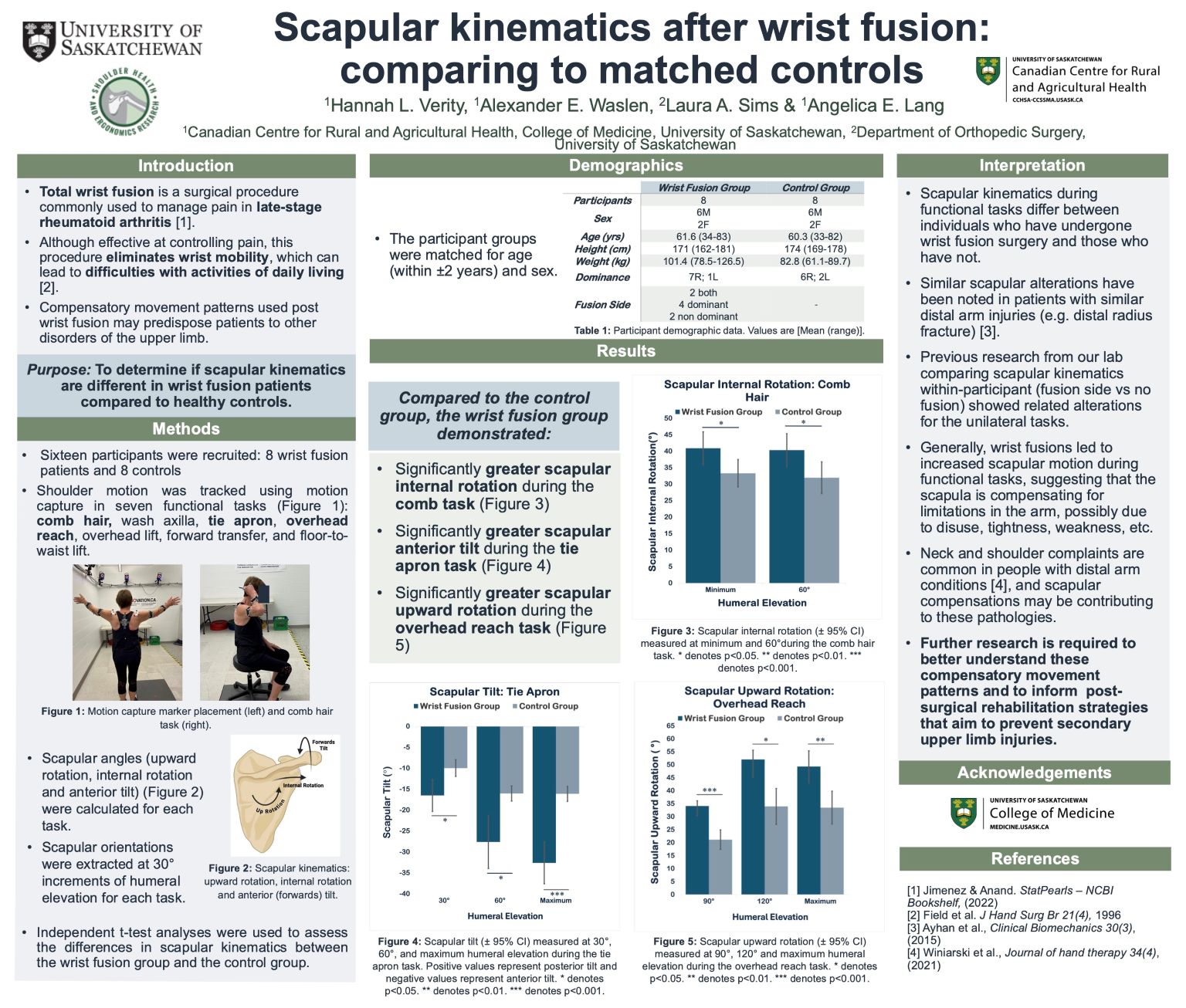
Scapular kinematics after wrist fusion: comparing to matched controls
Hannah Verity
Total wrist fusion is a surgical procedure commonly used to manage pain in late-stage rheumatoid arthritis, though it results in a complete loss of wrist mobility. This loss can lead to compensatory movement patterns in other upper limb joints, which may increase the risk of secondary musculoskeletal disorders. This study investigated scapular kinematics in wrist fusion patients compared to healthy controls. The hypothesis was that wrist fusion patients would demonstrate increased scapular motion to compensate for their wrist immobility.
Sixteen participants (8 wrist fusion patients, 8 age and sex matched controls) were recruited. Scapular motion was tracked using motion capture during seven functional tasks. Scapular angles (upward rotation, internal rotation and anterior tilt) were analyzed at 30 ° increments of humeral elevation. Between-group differences were assessed using independent t-tests.
Compared to the control group, wrist fusion participants demonstrated significantly greater scapular internal rotation during the comb hair task, greater anterior tilt during the tie apron task, and greater upward rotation during the overhead reach task. These findings suggest that scapula kinematics are altered to compensate for wrist immobility. Understanding these compensatory patterns is important to guide post-surgical rehabilitation strategies and help prevent secondary upper limb injuries.
